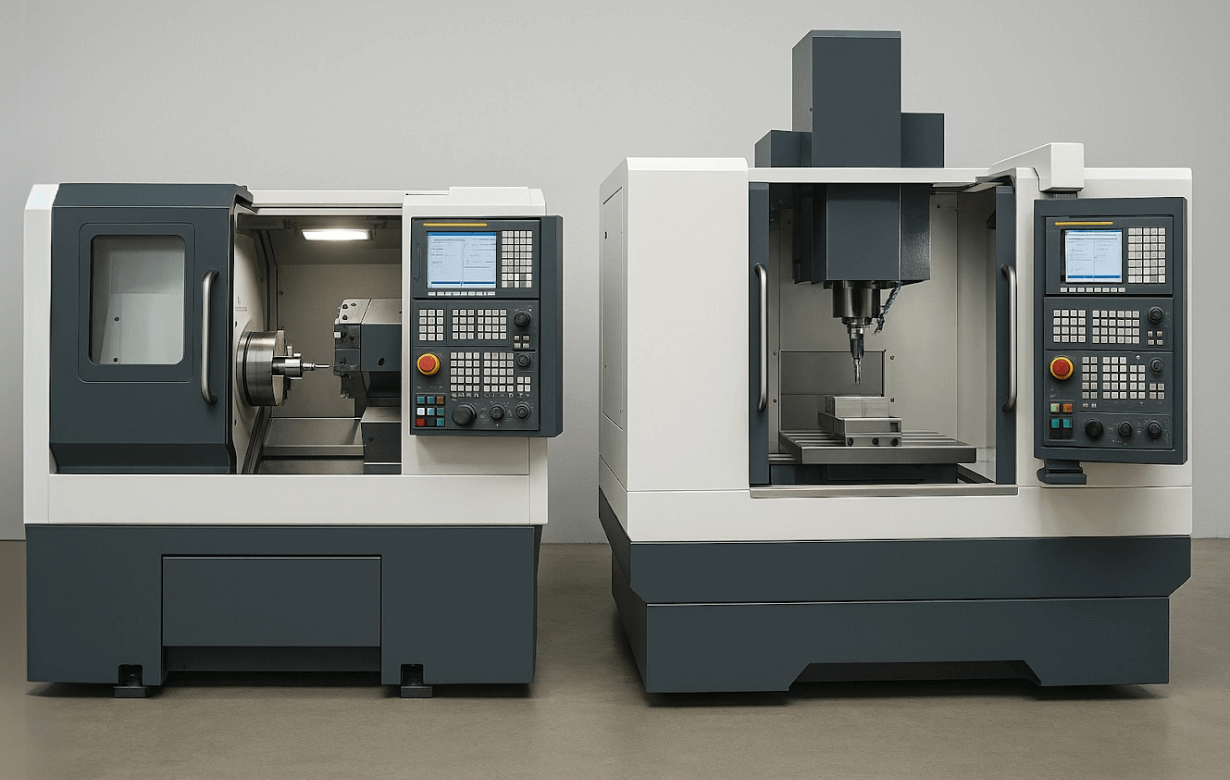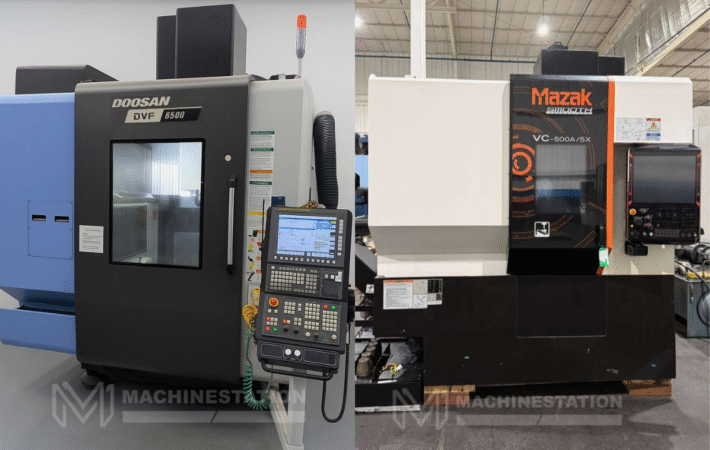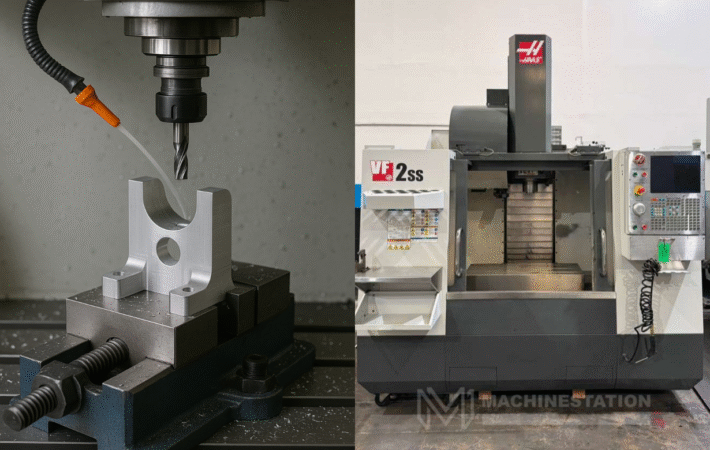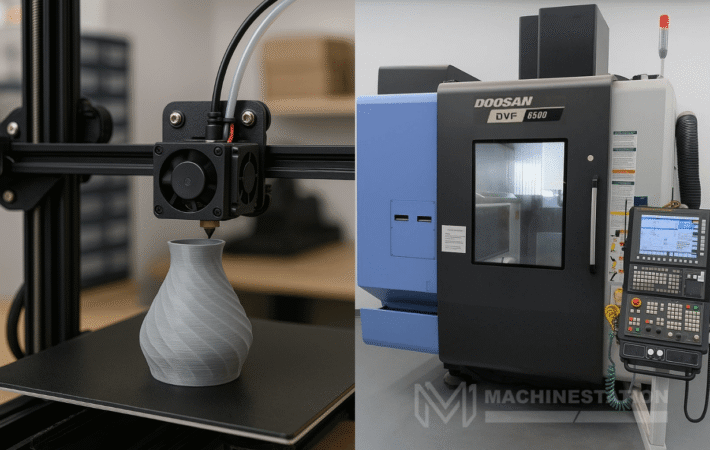CNC machines have revolutionized the entire manufacturing process worldwide. The precise work of making a tool perfectly for commercial use can now be done by just some coded commands without the need for any hard manual labor. The CNC machines can now work on machining of different kinds of materials and make different shapes, and parts with different styles of machines. CNC mills and CNC lathes are two different types of machines that serve different purposes helping in making unique products. But most people are not very clear about what these machines are used for. So, if you are also one of them and want to know the difference between a CNC mill and a CNC lathe, then read this blog and all your doubts will be cleared.
What is a CNC Mill?
A CNC mill is a type of machine that employs rotatory cutting tools to remove material from a workpiece. The cutting tool of the milling machines rotates at a very high speed while moving along multiple axes, which helps in cutting and shaping the material with precision. They are capable of working with different kinds of materials from metals to wood and others. CNC mills come in different configurations like vertical and horizontal machining centers.
What is a CNC Lathe?
A CNC lathe is the kind of machine where the cutting tool is stationary and works for removing material from a rotatory workpiece. Here the workpiece is mounted on a spindle and rotates at a high speed while the cutting tool moves along the length of the workpiece to remove materials. CNC lathes are mainly used for making cylindrical and rounded parts.
Key differences between CNC Mills and CNC Lathes:
Now that we have discussed the definitions of the CNC mills and lathes with you, it’s time to jump into knowing what are the basic differences between them. Here is a list of all the key differences between CNC mills and CNC lathes:
- Axes of movement:
- Mills uses 3 axes which are all of X, Y, and Z, with advanced models employing even four or five axes helping with greater flexibility and the ability to machine complex surfaces.
- Lathes generally function using 2 axes which allows for precise control over diameter and length.
- Cutting actions:
- CNC mills use rotating cutters to perform different kinds of actions like face milling, contouring, drilling, and slotting.
- Lathes are mainly utilized for making cylindrical parts, but can also be used for different actions like threading, tapping, and drilling.
- Movement and operation:
- In CNC mills, the workpiece remains stationary while the cutting tools move along different axes which allows for the creation of complex shapes and features from different angles.
- In CNC lathes, the cutting tool is placed at one point while the workpiece rotates, which is optimal for the creation of products that have rotational symmetry.
- Tooling and setup:
- CNC mills feature different kinds of cutting tools like face mills, end mills, and drill bits, depending on the operation being performed.
- CNC lathes, on the other hand, employ tools like parting tools, turning tools, and boring bars which are optimal for turning operations.
- Precision and tolerance:
- CNC mills are designed to achieve very high tolerances which makes them suitable for intricate parts that need detailed specifications.
- CNC lathes can also be precise but their main job is to maintain an accuracy of the rotational symmetry of the product being machined.
- Costs of the machines:
- CNC machines generally tend to be more expensive as they can be used for the creation of different types of products with complex geometries.
- CNC lathes are an affordable option as they serve only one type of customer who needs cylindrical parts for their business.
Advantages and Disadvantages:
Advantages of CNC Mill:
- Can be used for creating a wide range of products with various geometries.
- They are capable of producing highly detailed and complex parts.
- Different tools can be used in that single setup, helping to improve the efficiency of machining.
Disadvantages of CNC Mill:
- They are generally more expensive and need more space than lathes.
- Setting up and the programming process can be more complicated.
Advantages of CNC Lathe:
- They are highly efficient for producing materials in cylindrical forms.
- They are more affordable and compact compared to CNC mills.
- Easier to set up and can quickly switch between different turning tools for operations.
Disadvantages of CNC Lathe:
- The use case is only limited to parts with rotational symmetry.
- Limited workspace holding and fixturing options for irregular shapes.
Which one to choose between a CNC Mill and a CNC Lathe?
Here’s how you can find out which one between CNC Mills and CNC Lathes can be the best option for your business:
- If you need to machine complex geometrical parts then it utilizes mills while you should use lathes for cylindrical ones.
- If you need more tolerance and precision, then go with mills over lathes.
- If you are focused on one genre and need repetitive manufacturing then choose lathes, while if you need a high volume of intricate parts manufacturing then choose mills.
Conclusion:
Used CNC mills and Used CNC lathes are machines designed for two distinct purposes, serving two different user bases. A buyer should choose the one that best meets their business needs.






